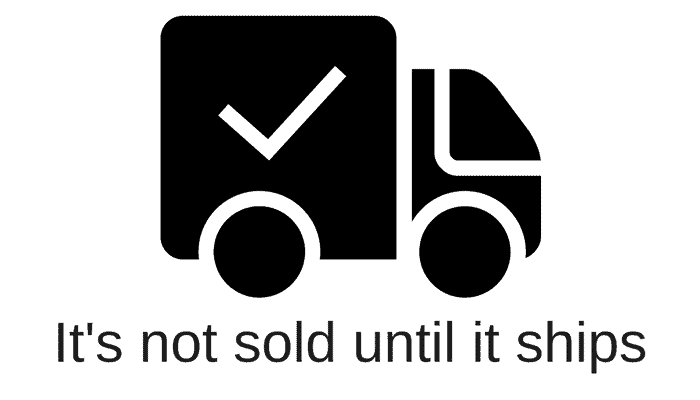Steve Jobs was famous for saying “It’s not done until it ships.” But we have a different take on this:
It’s not SOLD until it ships.
It’s easy enough to ship phones. Try shipping a 4-ton, 12-foot long piece of factory machinery.
But ship it you must. And what’s worse is that even if you have secured a deal with a buyer—even if you have both signed on the line—in most cases the sale cannot be counted on your sales sheet until it has left your loading dock with a shipper. That means that you don’t have the sale until you have a plan for safely crating and shipping the product.
Shipping Is Part of Production
As we like to say, production doesn’t end when the item is constructed, it ends at the end-user. In this view, shipping is just as important as constructing the item, and should be taken just as seriously. Because, let’s face it: if the item can’t safely reach its end user in a reasonable amount of time, then it may not be as useful as once thought!
Luckily, shipping is probably a lot less complicated than all the work you do to make the item. But preparing a plan for shipment in advance of the sale is important in order to expedite the shipment and decrease the risk of damage. These risks are real: improperly prepared shipments can result in total loss of the item.
Steps to a Smooth Shipment
Ensuring that your items can be shipped quickly and safely requires having a good plan in place. Here are the things you will need to think through:
-
Skids or Pallets
Does the item already have a pallet or a skid coming out of production? If not, what is the optimal base to be constructed, according to weight, size and climate conditions? Can the item be safely moved through the warehouse or factory prior to shipment?
-
Crate Design
Good crate design is what stands between a good and a catastrophic shipment. Weight needs to be distributed evenly if possible. If that is not possible then the crate should have stencils for “Center of Gravity” or “Heavy End” with specified lifting points. Depending on the conditions in which the item will be transported, you will also need to ask yourself: how the crate will be lifted, with slings or forks? Will it be stacked? Where does it need to be reinforced? And, what kind of material should the crate be made out of? If you are preparing a crate for export, then you will need to use ISPM-certified wood. More on that in this post.
-
Blocking, Bracing & Foam Design
So you have a design for the outside of the wood crate, but what about the inside? You’ll need to block and brace the item, meaning that you’ll need to design components inside the crate to prevent the item from moving. You’ll also need to include foam and other soft material in order to minimize vibration and friction so that the item has a smooth ride. More on foam design in this post.
-
Barrier Bags
Will the item be shipped by sea? Or is it possible that the item will be outside for an extended period of time? If so, you need to consider how you will protect the item from salty air, moisture and extreme temperature. The most effective way to do this is through the use of a vapor barrier bag, sealing the item from the outside air.
-
Labelling
How will the crate be labelled? When the crates are open and are sitting in your facility, it’s very easy to see what goes where and which item is in which crate. When they arrive months later at their destination, it won’t be as easy to remember. Crates need to be clearly labelled, they need moving and receiving instructions (this end up, for instance), and they need the contact information of both parties. QR codes and paper labels can be useful, but make sure there is a backup if the paper label gets damaged.
-
End-User Receiving
Where are the items going and what capabilities does the facility have for receiving them? Does the end-user have any specifications in terms of size of loading dock or types of machinery to handle the crates? Are there height or weight restrictions? Have receiving instructions been communicated?
Shipping Is Part of the Production Process
These are just some of the concerns about shipping that need to be considered as part of the production process. Without them, you won’t be able to get your products safely out the door and they won’t yet be able to be counted as sales. Far too often companies spend weeks or months designing and building a product without a single thought to packaging until it is sold and the Shipping Department asks how it is going to get crated. If you need help crating or planning your packaging process, get in touch. Reid Packaging can expedite a safe and efficient shipping plan.

